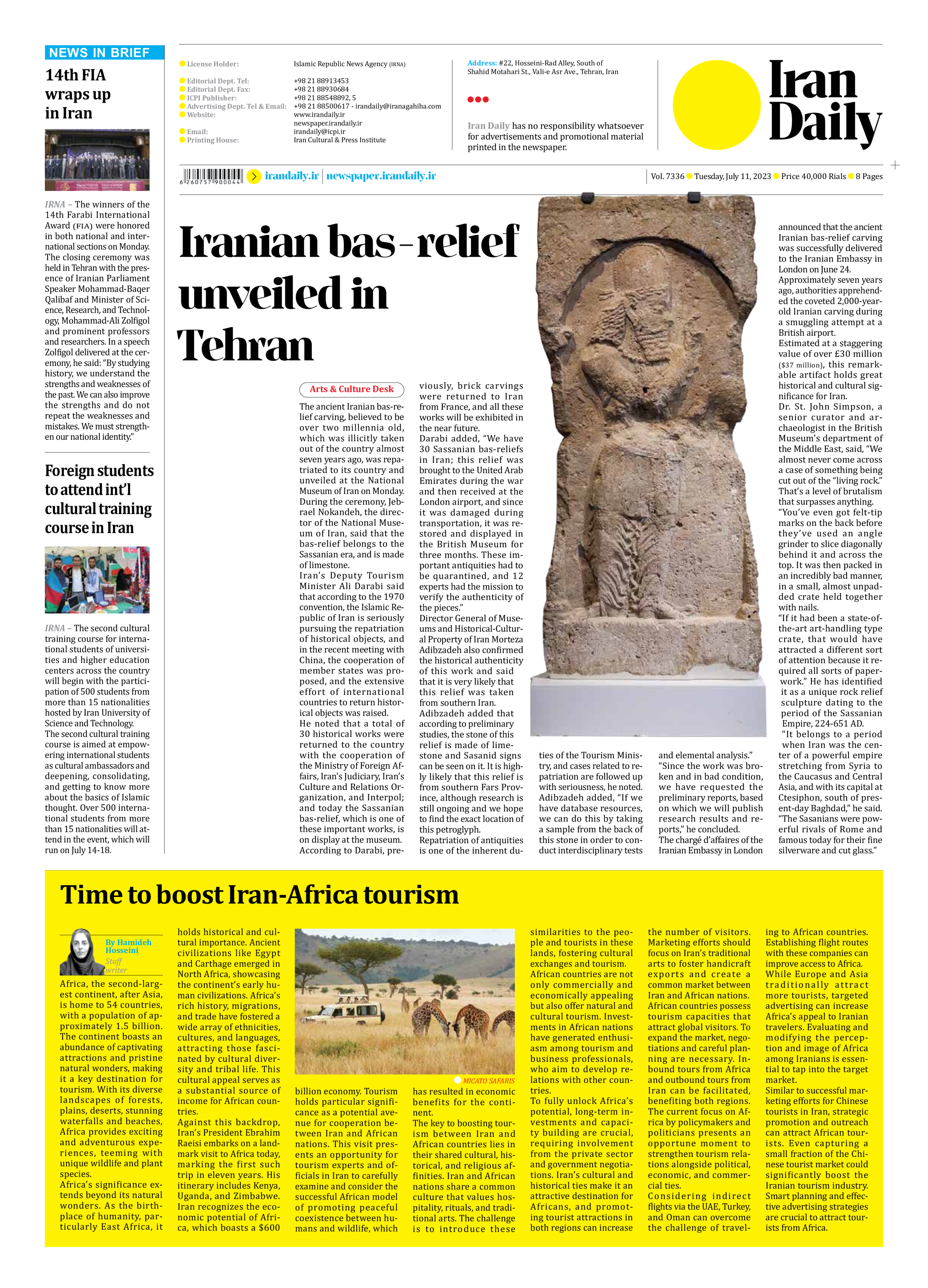
Time to boost Iran-Africa tourism
By Hamideh Hosseini
Staff writer
Africa, the second-largest continent, after Asia, is home to 54 countries, with a population of approximately 1.5 billion. The continent boasts an abundance of captivating attractions and pristine natural wonders, making it a key destination for tourism. With its diverse landscapes of forests, plains, deserts, stunning waterfalls and beaches, Africa provides exciting and adventurous experiences, teeming with unique wildlife and plant species.
Africa’s significance extends beyond its natural wonders. As the birthplace of humanity, particularly East Africa, it holds historical and cultural importance. Ancient civilizations like Egypt and Carthage emerged in North Africa, showcasing the continent’s early human civilizations. Africa’s rich history, migrations, and trade have fostered a wide array of ethnicities, cultures, and languages, attracting those fascinated by cultural diversity and tribal life. This cultural appeal serves as a substantial source of income for African countries.
Against this backdrop, Iran’s President Ebrahim Raeisi embarks on a landmark visit to Africa today, marking the first such trip in eleven years. His itinerary includes Kenya, Uganda, and Zimbabwe. Iran recognizes the economic potential of Africa, which boasts a $600 billion economy. Tourism holds particular significance as a potential avenue for cooperation between Iran and African nations. This visit presents an opportunity for tourism experts and officials in Iran to carefully examine and consider the successful African model of promoting peaceful coexistence between humans and wildlife, which has resulted in economic benefits for the continent.
The key to boosting tourism between Iran and African countries lies in their shared cultural, historical, and religious affinities. Iran and African nations share a common culture that values hospitality, rituals, and traditional arts. The challenge is to introduce these similarities to the people and tourists in these lands, fostering cultural exchanges and tourism.
African countries are not only commercially and economically appealing but also offer natural and cultural tourism. Investments in African nations have generated enthusiasm among tourism and business professionals, who aim to develop relations with other countries.
To fully unlock Africa’s potential, long-term investments and capacity building are crucial, requiring involvement from the private sector and government negotiations. Iran’s cultural and historical ties make it an attractive destination for Africans, and promoting tourist attractions in both regions can increase the number of visitors. Marketing efforts should focus on Iran’s traditional arts to foster handicraft exports and create a common market between Iran and African nations.
African countries possess tourism capacities that attract global visitors. To expand the market, negotiations and careful planning are necessary. Inbound tours from Africa and outbound tours from Iran can be facilitated, benefiting both regions. The current focus on Africa by policymakers and politicians presents an opportune moment to strengthen tourism relations alongside political, economic, and commercial ties.
Considering indirect flights via the UAE, Turkey, and Oman can overcome the challenge of traveling to African countries. Establishing flight routes with these companies can improve access to Africa.
While Europe and Asia traditionally attract more tourists, targeted advertising can increase Africa’s appeal to Iranian travelers. Evaluating and modifying the perception and image of Africa among Iranians is essential to tap into the target market.
Similar to successful marketing efforts for Chinese tourists in Iran, strategic promotion and outreach can attract African tourists. Even capturing a small fraction of the Chinese tourist market could significantly boost the Iranian tourism industry. Smart planning and effective advertising strategies are crucial to attract tourists from Africa.







